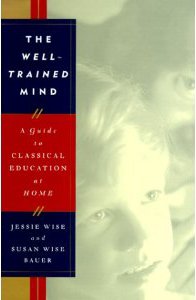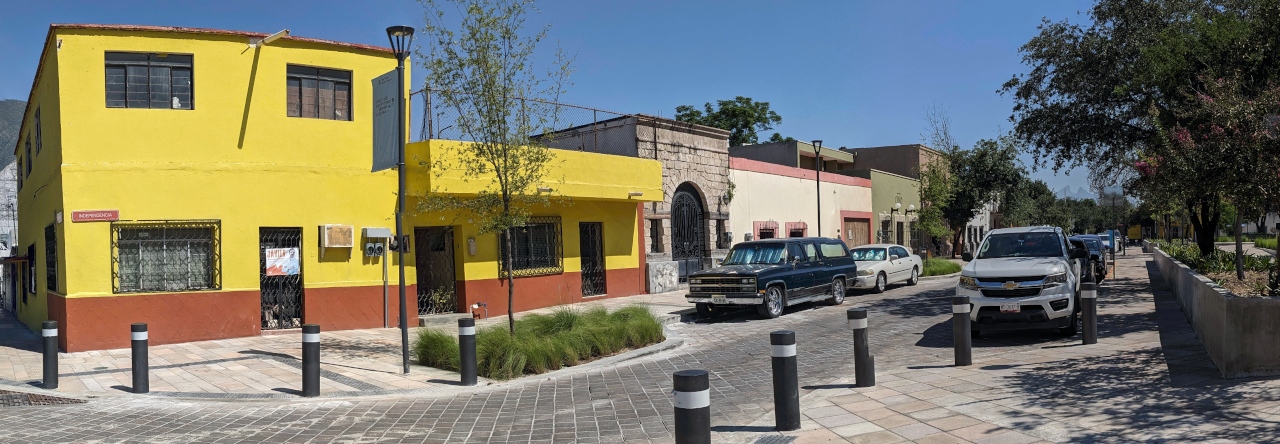This is the first in a series of articles about why we used Sonlight Curricula in our homeschool. Here is a page that holds a description of the series and links to the other posts in the series. We bought core packages for what would be third through tenth grades in a traditional school. Kelly used the program from fifth through tenth grade. Christian used the program from third through eighth grade. This series mostly describes what we did for all the subject areas except math, music, and art. I have already written pretty extensively on this blog about what we did for math and plan to do a future series on our art art program. We bought most, but not all of our core materials from Sonlight and followed their curriculum guides with a fair amount of rigor. Like most other homeschoolers, we deviated in minor ways where we saw fit.
 About half of the books you see in the mess in the picture below came from Sonlight. We are very thankful we used their curriculum programs as a base for our homeschool for every year we homeschooled after the first grade. Kelly started out at a neighborhood Christian kindergarten. We started homeschool the year after that with programs we put together ourselves. We used Explode the Code to teach Christian how to read when he was four. I read a wonderful book titled, The Well-Trained Mind: A Guide to Classical Education at Home by Susan Wise Bauer that formed the basis for Kelly’s first grade year. Its precepts heavily influenced all our seven homeschool years. I have two rubs against the book that pushed me toward prepackaged curricula: 1) The author seems to be supremely well equipped to talk about history, literature, and the social sciences, but very much less qualified to talk about math and the hard sciences. 2) The methods proposed in the book require an incredible amount of work with respect to material selection and daily study planning. Nevertheless, that is what we did with Kelly in the first grade. It worked superbly for us both in terms of the joy we derived from the day to day work and the academic results.
About half of the books you see in the mess in the picture below came from Sonlight. We are very thankful we used their curriculum programs as a base for our homeschool for every year we homeschooled after the first grade. Kelly started out at a neighborhood Christian kindergarten. We started homeschool the year after that with programs we put together ourselves. We used Explode the Code to teach Christian how to read when he was four. I read a wonderful book titled, The Well-Trained Mind: A Guide to Classical Education at Home by Susan Wise Bauer that formed the basis for Kelly’s first grade year. Its precepts heavily influenced all our seven homeschool years. I have two rubs against the book that pushed me toward prepackaged curricula: 1) The author seems to be supremely well equipped to talk about history, literature, and the social sciences, but very much less qualified to talk about math and the hard sciences. 2) The methods proposed in the book require an incredible amount of work with respect to material selection and daily study planning. Nevertheless, that is what we did with Kelly in the first grade. It worked superbly for us both in terms of the joy we derived from the day to day work and the academic results.

The Library Wing of Our Bonus Room – Homeschool Materials
All was well, but we decided to put the kids in government school when Christian was in kindergarten and Kelly was in the second grade. The reason was that my job did not allow for sufficient time to prepare, let alone deliver according to the methods and materials Susan Wise Bauer so effectively described in her guide book. The schools the kids attended in Sherwood, Oregon were really pretty good. They stagnated a little academically, but made a few friends and enjoyed themselves very much.
We moved to Albany, Oregon at the beginning of Kelly’s fourth and Christian’s second grade years. We are very thankful to the government schools in Albany because they shocked us out of our lethargy and motivated us to return our kids to homeschool. The teachers, the teacher’s aides, the principal, the school lunches, and just about everything else about those schools was bad for our kids in just about every way. Our experience suggests that government schools are a bad places to “socialize” children. Our kid’s spirits got harder and more aggressive and their academics suffered greatly. The teachers’ disinterest and aggressive worldview advocacy, an unsupportive principal, totally underqualified and surly teachers’ aides, and a plethora of other problems are a story for another day–I took extensive notes on all this while it happened and plan to write about it before too long. I would be remiss in saying that our experience in the Albany government schools was all bad. We know have a much more intimate understanding of the need for parents to take responsibility of their children’s education and not leave it to “professional” educators. Also, there WAS a wonderful school secretary in one of the schools who we appreciated very, very much.
Well before the end of our Albany government school year, we decided we would homeschool the next year. I had a great job, but worked about ten hours per day, so I only had three or four hours in the evening after dinner to work on the kids school. Lorena was (is) a stay at home mom, so she could run the kids to music lessons, homeschool groups, swim lessons, art classes, and all those sorts of things. She did not feel equipped to teach the homeschool. She speaks beautiful English, but Spanish is her first language. She kept the house, cooked for everyone, and usually attended community college three nights per week, so she had her hands full. I agreed to act as the teacher.
I had the time an energy to do the day to day teaching in the evenings and weekly lesson plans on the weekends. I love this stuff, but after my experience with Kelly’s first grade year, I knew I did not have enough time to follow The Well Trained Mind guide in the way that had worked so well for us previously. I wanted to do that, but the time required to search for materials and create lesson plans left little one-on-one time with the kids. That was the other thing. The effort to teach Christian to read in preschool took only about twenty minutes per day for about three months, so I could spend a whole lot more time on teaching Kelly. Now, I had two kids that required a couple of hours of one-on-one time plus an hour or so of planning each night and six to eight hours of preparation on the weekends if I were to do it properly, in the way that had worked so well with Kelly in the first grade. I just did not have the time.
I looked at a lot of programs that summer before Christian’s third grade year and Kelly’s fifth grade year of school. I will explain why we chose Sonlight rather than one of the others in the next installment.
